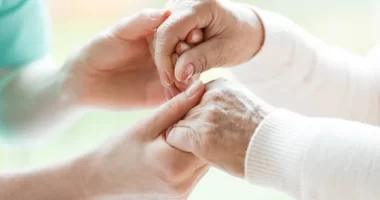Patients with end-stage lung disease have only 10% chance of being alive for 1 year without a lung transplant as compared to 10% chance of being alive for 20 years with a lung transplant operation.
Jayshree Mehta, a 41-year-old homemaker from Vile Parle, Mumbai was the first Indian to get the First Lung Transplant in India successfully on 11th July 2012. The surgery was done by Dr. Jnanesh Thacker, Program & Surgical Director – Heart, Lung, Heart & Lung Transplantation & Assist Devices, Yashoda Hospitals, Hyderabad. The breakthrough event served as a catalyst to begin the development of Lung Transplantation programs in the country.
“Lung transplantation is the definitive treatment for end-stage lung disease but it took several decades of experimental studies and clinical attempts to reach this success,” said Dr. Thacker, also known as the Pioneer of Lung Transplantation in India.
“Most patients coming to me ask me if they can be managed medically instead of having a lung transplant. The fact is that these patients with end-stage lung disease have only 10% chance of being alive for 1 year as compared to 10% chance of being alive for 20 years with a lung transplant operation,” he added.
According to Dr. Thacker, the field of Lung Transplantation has made several significant advances in the last decade. He shared his experience from doing the first lung transplant in India to the changes that happened in the past 10 years. Here are some developments he pointed out:
Also read: 13 health conditions including diseases you never knew beetroot could improve if not cure
Medical progress
Several advancements have taken place to make Lung transplantation a safe operation for patients with end-stage lung disease. Medical interventions with progressive improvement in anti-rejection medication have enabled physicians and surgeons to ensure an uncomplicated recovery post-surgery. For example, better intensive care monitoring technology, such as cardiac output monitor which measures the amount of blood pumped by the heart; pulse oximeter aids to have better methods to measure oxygen implants; advanced blood gas machines to measure oxygen, carbon dioxide, acid, and alkalinity of the blood.
Surgical progress
Not only medical but surgical advancements have occurred in the last decade. For instance, the introduction of extracorporeal oxygenation membrane (Artificial Lung). It helps in maintaining oxygenation when the transplanted lungs are recovering from an injury, or when the patients breathing collapses (i.e. Lung failure). Hospitals have access to better preservative solutions to preserve the donated lung with a new solution called Perfedex (a Dextran-based solution, a substance that has higher osmotic pressure i.e. higher concentration solution).
Technology progress
There has been an improvement in the quality of sutures like polypropylene which can remain inert without causing any reaction in the body for a duration of 100 years. With advances in surgical techniques, surgeons are able to tailor the lung to fit the size of the chest cavity. Hence, this has led to the usage of a stapler made of Titanium in triple rows of varying depth for better preservation of the blood supply to the cut-edges of the lungs. The recent advance of Double-Lung transplantation has shown improved 5-year survival. Around the early 2000s, surgeons were replacing only single lungs for fibrotic diseases. But today, Double Lung Transplants patients are able to survive beyond 5 years with great ease.
Recovery rate progress
The recovery rate is accelerated by better surgical techniques and better post-operative care which is prevalent only in the current decade. All the medical and surgical advances have led to better and faster recovery for patients who receive lung transplantation.
What needs to change to perform more lung transplants in the future?
Despite these advancements, the morbidity and mortality rate continues to remain high for lungs as compared to other solid organ transplants. Challenges pertaining to donor shortage continue to prevail and must be prioritized, which requires educating people to accept organ donation as a norm, and this can take place with creating awareness amongst the citizens of the nation. Organ awareness programs must be introduced in communities, religious institutions, schools, colleges, and all associations of the lay and the learned. Such changes within our society will have a significant impact on shaping the field of lung transplantation in the post-Covid era – Dr. Thacker stated.
Also, in the COVID era, the spotlight has shifted to the urgent need for lung transplants and ECMO i.e. Extracorporeal membrane oxygenation (Artificial Lung). But there are a few lung transplant programs in the country, which are mainly limited to Maharashtra, Tamil Nadu and Telangana. Hence, patients from different geographies in India are airlifted and transported to these lung transplant centers. Similarly, organs also need to be transferred from different locations to these centers for successful lung transplantation. This burden has increased, and the need of the hour is to have chartered planes and helicopters for such transplant emergencies – he added.
Also read: Can you freeze lemons?
This post first appeared on The Health Site









